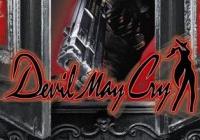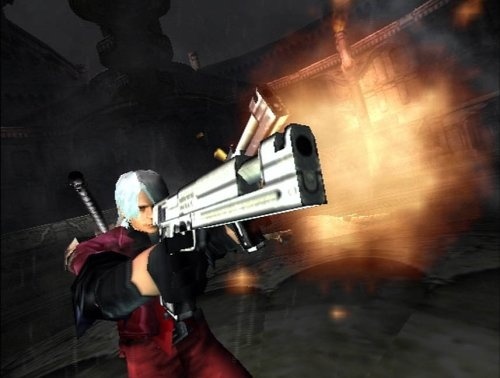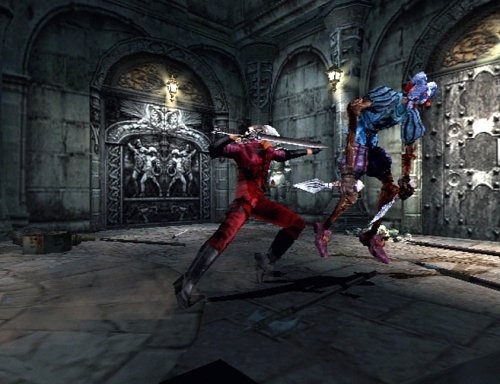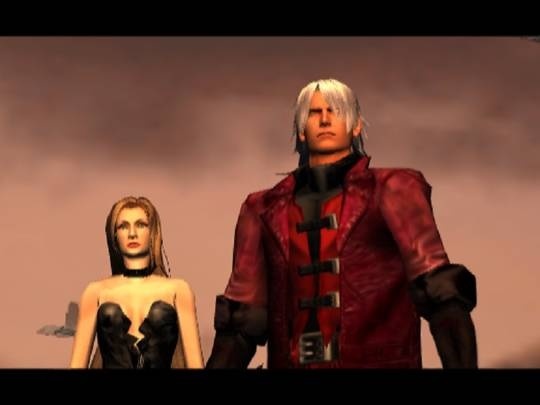Devil May Cry (PlayStation 2) Review
By Renan Fontes  03.09.2016
03.09.2016

It's hard to think about the hack and slash genre without thinking about Devil May Cry. Fast paced action, gothic atmosphere, and an emphasis on style made it one of the most memorable titles of 2001. Frequently emulated and channelled since, DMC has had lasting power on the genre and the video game industry as a whole, inspiring countless reflex-based action series, but few have come close to matching Capcom's original hit in the past 15 years. Fondly remembered and respected, does Devil May Cry hold a candle to the hack and slashes of today, or is it now little more than a jumping off point?
Had Devil May Cry stuck to a more typical mission structure without a score system or any indicators for technique quality, it's possible it still would have been fondly remembered thanks to its spectacular gameplay, but a lot of that spectacle would have been hidden in the background without some pushing from the ranking system.
Incredibly arcade-like in nature, Dante's rank at the end of each mission is determined by the time it took to complete the stage, the amount of damage inflicted on him, how "stylish" the combat was, how many items were used, and how many red orbs were collected throughout the mission. Once the mission is over, Dante will be awarded a grade from D to A, and S if the stage was cleared near perfectly.
The addition of the ranking system and the grades gives DMC a longevity that it wouldn't have had otherwise. There's incentive to run through stages multiple times to get S ranks, or to just practice the controls and gain a hold over the flow of combat. By offering grade linked bonuses at the end of missions, mastering Dante's techniques are all the more encouraged and exciting.

Finishing a mission on time, avoiding damage, neglecting to use items, and collecting red orbs are all fairly simple to do with enough time put in, but it's making sure Dante's fighting "stylishly" that's the real challenge.
During combat, an on-screen meter will pop up to monitor how well Dante is chaining attacks together, the frequency of said attacks, and the variety of attacks at play. The meter starts at "Dull," then moves onto "Cool," "Bravo," "Absolute," and "Stylish;" each level of the gauge corresponding with one of the ranking grades.
At the beginning of the game, Dante doesn't have very many moves to choose from, so keeping the meter active and high requires a mix and match of the default basic attacks, but throughout his journey, Dante will be presented with different weapons and can purchase new abilities for them, adding greater scope to the combat system.
Fighting enemies requires a mix of patience and initiative. Mindlessly hacking away results in little more than Dull combat, but waiting for an opening and swinging at the right time to parry a strike and then rushing into a combo makes way for cool hack and slashing in need of a Bravo.

Dante can't just stand around waiting for moments to strike, though. The longer he's idle, the faster the stylish meter drops. Constant action is necessary to get the meter anywhere close to "Stylish." New moves and weapons acquired throughout the journey give more than enough options to keep Dante moving and safe from danger. Properly mastering counters, dodging, and comboing means a better grade and more rewards, but not managing to do so doesn't hurt, either.
Amongst all the grading, ranking, and technique encouragement, Devil May Cry doesn't seek to punish novices. There's no real penalty for getting a low grade, and all content is available on all difficulty modes. There's a focus on challenge and pushing limits, but getting through without fully mastering the combat is doable and still offers a great deal of fun.
No matter how the combat is on its own, however, it can't fully reach its potential without equally realised game design. Thankfully, Devil May Cry rarely lets its design quality slip. With one or two exceptions, level design only complements its high energy battles. Dante will be expected to do some basic platforming here and there, but when it comes to actual enemy encounters, fiends are placed in appropriate arenas and halls that invoke some more critical thinking into the fighting; should Dante lure enemies out in the open, should he push them into corners to give them little room to retaliate? Great level design leads to great gameplay variety.

The mission structure only helps to keep the level design quality high. Each mission relegates Dante to a few specific locations, but any blocked off areas always make sense, and each mission flows naturally into the next, lending DMC a fair and respectable pace.
It's the bosses that highlight the whole package, however. Design and combat merge masterfully together in every boss fight to create an arena and enemy that play off each other to give Dante as much trouble as possible, while also offering a fair challenge with more than one way of getting through it.
While each boss is reused at least three times, each encounter offers something different. In much the same way that Dante evolves throughout his journey, so do his enemies, sporting new moves and ways to kill the further the story progresses. Only on the surface do the reused bosses feel in poor taste, but in actual practice they're used just as masterfully as everything else in DMC.
Laying the groundwork for a decade-and-a-half of hack and slash titles to follow, Devil May Cry more than manages to hold up. At its core, it's an action game with arcade influences that simply wanted to encourage more sophisticated gameplay, and even though its message has been realised in the years since its release, DMC holds up thanks to its charm, aesthetic, and desire to be as entertaining as possible.

Cubed3 Rating
Great - Silver Award

Even though the genre's been touched up and improved in more ways than one since its release, Devil May Cry still manages to impress 15 years later. The combat persists as an adrenaline-pumping marathon of reflex-based attacking and dodging, and the ranking system continues to encourage masterful gameplay. In a lot of ways, it's Devil May Cry's simplicity that makes it stand out amongst more modern hack and slashes. There's a big focus on flashy spectacle, but the actual meat of it all is rooted in an impressively tight scope that rarely strays off the path. It's still fun, it's still challenging, it's still Devil May Cry.
Comments
Comments are currently disabled

 Sign In
Sign In Game Details
Game Details
 Out now
Out now  Out now
Out now  Out now
Out now  Out now
Out now  Subscribe to this topic
Subscribe to this topic Features
Features





 Top
Top

